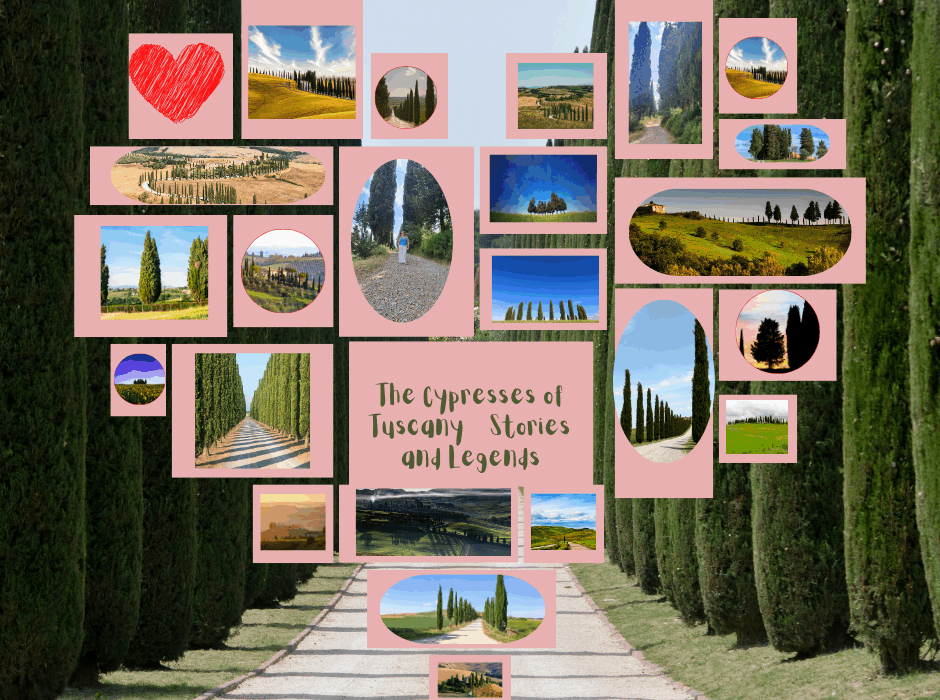If I had to name a single image that best represents Tuscany for me, it would be a country road lined with cypress trees on both sides. These tall, dark green trees are everywhere: on hilltops, among vineyards, at the entrances of farmhouses, or suddenly appearing from behind a curve. But among them, there is one that is not only part of the landscape but also tells a unique story – the more than 575-year-old cypress at Villa Campestri in Mugello.

A Tree That Survived the War
According to local tradition, the cypress at Villa Campestri was planted in 1446 by Saint Antoninus, the Bishop of Florence. That alone is enough to capture anyone’s attention. But what makes it truly remarkable is its story from World War II: the tree was severely damaged when German soldiers camping nearby placed dynamite at its base, as it stood out too much for the Allied forces. The explosion destroyed its crown, leaving only the trunk and a few maimed branches.

And here comes the surprising twist: the tree did not die. Slowly, over decades, it began to grow new shoots, and although its top is still open today, it somehow looks complete. Standing in front of it, you can clearly see the scars, but there’s still something undeniably alive about it. At least, that’s what it meant to me: it’s not perfect, but it’s strong.
Why Cypress Trees?
Cypresses are not native to Tuscany – they originate from Persia and the eastern Mediterranean, brought here by the Greeks and later by the Etruscans. Over time, these trees were imbued with deep symbolism: representing life and death, protection, and remembrance. In ancient Egypt, their wood was used for sarcophagi; Hippocrates believed in their healing properties; and in Tuscany, they were often planted along roads, on estates, or near cemeteries.
Today, they’re inseparable from the Tuscan landscape – both practical and iconic.
5 Iconic Cypress Spots to See in Tuscany
If you love photographing cypress trees or simply want to see the most iconic places, here are some of my favorites:
1. Monticchiello Serpentine
This famous stretch lies between Pienza and Montepulciano. Often seen in drone shots and postcards, but just as breathtaking in real life.

2. La Foce Cypress Road
Not just beautiful, but historically rich – made famous by writer and philanthropist Iris Origo. The surrounding landscape is peaceful and green, and the trees seem to whisper stories of centuries past.

The classic Tuscan sunset spot. The winding road over the hill and the cypress trees form a perfect composition – a favorite among photographers.

4. Cypress Cluster of San Quirico d’Orcia
This small group of trees in the heart of Val d’Orcia has become a symbol of Tuscany. It always radiates the same serene calm – in every season.

5. Villa Campestri – The Cypress of Saint Antoninus
Not the most famous, but to me, one of the most interesting. Because of its story, and because it doesn’t impress with perfection, but with what it has endured.
Tuscany’s cypresses aren’t just part of the scenery. Somehow, they’re always there when you feel like slowing down or pausing for a moment. If you’re traveling through this region, take time to leave the main roads and discover these special places – and you’ll see, the cypresses will show you the way.


